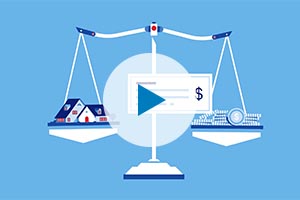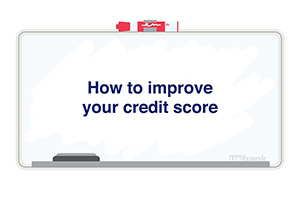Understand what’s causing your cash flow problems and choose the right strategy to get your balance sheet back on track.
As a business owner, you know cash flow is key to your day-to-day operations and that problems with cash flow can intensify quickly. Fortunately, there are many ways you can use credit to help plug cash flow gaps.
Review your balance sheet and identify cash flow issues
Start with your balance sheet, says Kaylyn Houston, business banking client manager at U.S. Bank. Figuring out why you’re having cash flow problems is an important part of deciding how to solve them. Not only that, but having a balance sheet on hand can help you determine what type of credit options you might qualify for and ultimately help you if you decide to apply.
“It’s really important for business owners to keep track of their expenses and income,” Houston says.
Review the numbers with your accountant, banker or a trusted financial professional, try to pinpoint what’s causing your cash flow problems. Here are some potential strategies for common cash flow dilemmas:
Lagging payments
Even the best clients sometimes fail to pay on time. If you’re seeing a pattern, you have a few options.
- Discounts: If you give your clients a 60-day payment window, you might offer them a small discount, say 5 percent, if they pay within 30 days.
- Credit cards: In addition to building your business credit score and often offering rewards, business cards can help you in a pinch. Just make sure you can pay your bill each month to avoid fees and creating new cash flow problems. You also want to try to keep your balance below 50 percent of your credit limit, Houston says.
- Line of credit: Take out a line of credit before your business needs one, Houston advises. Once cash flow issues arise it can be more difficult to obtain the financing you need. If cash flow problems aren’t affecting your overall profitability right away, a line of credit may still be a smart addition to your financial profile.
Vendor payments piling up
If you’re seeing that you’re short on cash for vendor payments, think about how to finance them.
- Vendor financing: If you decide to go this route again, or for the first time, make sure to ask your vendor for the cash price. This helps you evaluate a vendor’s financing offer against more traditional options, such as a bank loan.
- Line of credit: Banks can offer advantages over vendors when it comes to financing. If a bank and vendor offer similar terms, but a bank line of credit allows you to take advantage of an early payment discount, it could be an advantage for you in the long run.
Seasonal crunches
Seasonality, as you know, can have a huge impact on cash flow. But the effect can be magnified for businesses that have taken out, or plan to take out, loans to help finance their growth.
- Talk to your banker: Most financial institutions understand the seasonality of business and are willing to discuss adjusting payment terms so they work for you. Be clear about your needs, such as delaying payments or wanting to repay loans over a shorter period of time. It’s possible they can help tailor terms to better fit your needs.
Too much debt
Whether you bought a lot of equipment prior to business slowing down or just put too much on the company card, debt payments can be a big impediment to cash flow.
A strategy for tackling debt likely depends on how long you’ll need to pay off the balance.
- Less than a year: If you think you can pay down your debt in a few months, consolidating it onto a low-APR credit card may be a good option. Make sure you’re able to make the payments, as rates may jump after an introductory period.
- More than a year: Consider a consolidation loan that may allow you to lower your monthly payments. Be sure to consider the loan’s impact holistically.
Other credit options
If your particular cash flow problem doesn’t fit neatly into any of these categories, you still may be able to leverage credit:
- Many banks offer working capital or cash-infusion loans. These are sometimes known as “quick loans” and are a common way businesses get back on track if cash flow problems appear to be temporary and easily solvable.
- If cash flow is tight and you are planning a major purchase, using an equipment loan to smartly finance that purchase could help, freeing up more capital for your day-to-day operations.
There are many options for solving a cash flow problem — or using credit for that matter. Contact U.S. Bank today to explore how we can address your specific cash flow needs.


























































































